| Umělec magazine 2005/3 >> READ THIS TEXT | List of all editions. | ||||||||||||
|
|||||||||||||
READ THIS TEXTUmělec magazine 2005/301.03.2005 Travis Jeppesen | review | en cs de es |
|||||||||||||
|
Text Ground
Curated by Cosmi Costinas Display Gallery, 04.28 -05.17 The first thing you see upon entering the gallery are the following words written on the back wall in neon orange spray paint by Mircea Cantor: COLLECTIVE MEMORY ITEMS + LAYERED REALITY SPECULATIVE UNDERSTANDING DISCIPLINARY INFUSION SYSTEMATIC ASSOCIATIONS CONFIRMED MODELS = ? A huge block of blue paint covers the wall to the left of the entrance. If you hold a flame up to the paint, it dissipates to reveal bits and pieces of hand-written text beneath, although it’s impossible to decipher the whole message. That’s the point, though. Gabriela Vanga, the author of this piece, won’t allow us to read it. Just as in life, you are unable to gage the full picture all at once. It’s more like a puzzle that you have to solve in order to discover the meaning, only to find out along the way that the meaning is the puzzle itself. It’s difficult to fathom how enormously complex the entire process is, from start to finish. The creation of any work of art necessitates the recognition (or occasional creation) of a gaping void, and the subsequent desire to fill it. It entails enormous motivation, towards an end result that very few will comprehend. If you bring your project before the public, many people will believe you’re crazy. You may even be led to question your own sanity. Otherwise – perhaps worst of all – you will probably be simply ignored, your efforts at rendering the commonplace miraculous shrouded in the shadows of indifference by a soulless, uncomprehending mob. That’s sort of a vague outline of the more obvious occupational hazards of being an artist in general. Add on to that the additional challenges imposed by one’s geocultural position – the condition of living and working in post-Communist Europe, in this case Romania – and you begin to get a better idea of the feelings of hopelessness that shade this picture. Until fairly recently, hearing the word depression became so commonplace in discussions of contemporary art that one began to wonder if there was anything but. Ioana Nemes’ project documents the artist’s own private depression for the month of October 2004. The work consists of two charts. The first one color codes each day according to physical energy, emotional energy, intellect, income, and luck level. Intellect reaches the highest peaks, while everything else remains around zero or in the negative integers. The level of luck remains at the most steady rate, rarely rising above or falling below zero. Emotional energy starts out at the lowest – -7 – only to rise steadily throughout the month before plummeting once more, ending the month stranded somewhere between –3 and –4. The other chart is a calendar of each day of the month summarizing that day’s activities, followed by a (+), (-), or (=) to signify that day’s overall rating. On the 8th of October, the artist “figures out how low I am,” which get a (=). The next day, she is “lost in my own incapacity of understanding anything”; that gets a (-). The third day of the month brought with it a “depressive mood + anger + hate for communist attitudes (-),” while the better days (+) feature such highlights as “superficial talk with people at the opening” and “sold one book to see Nicole Kidman and Gael Garcia Bernal,” presumably on screen. Ciprian Muresan’s lo-fi installation is in three parts. The first is a photographic reproduction of a door scarred with nail holes. The second is a short, cryptic text explaining a father’s, presumably the artist’s, penchant for “punishing” his son by hammering a nail in the door for each instance of bad behavior. As the son grows older, the father would remove one nail for each of the son’s good deeds. The next paragraph describes how the father returned home with bandaged hands a few weeks after the Romanian revolution in 1989. “Until this day, the truth about what happened in those days of historical torment with his father – a member of the Romanian communist secret police – remains unclear for Ciprian.” The third part is a black-and-white photo of a hand. Curator Cosmi Costinas has done a fine job in bringing together these four textual meditations on the precarious state of art within the context of contemporary Romania. What’s remarkable is the extent to which the individual works are able to stand on their own while simultaneously engaging one another in a dialog, effectively forging a unique synthesis between the private-cerebral and public-political. Muresan’s narrativistic piece is mysterious enough to haunt us long after we’ve left the gallery, and is laced with the same strain of bitter reflection and concealed desperation that we find in Nemes’s self-exploitive data. Cantor’s text can be read for what it is, but it can also be read as an accurate summation of everything else we see in the gallery, while Vanga is there to remind us that we can never accurately read the writing on the wall.
01.03.2005
Recommended articles
|
|||||||||||||
|
04.02.2020 10:17
Letošní 50. ročník Art Basel přilákal celkem 93 000 návštěvníků a sběratelů z 80 zemí světa. 290 prémiových galerií představilo umělecká díla od počátku 20. století až po současnost. Hlavní sektor přehlídky, tradičně v prvním patře výstavního prostoru, představil 232 předních galerií z celého světa nabízející umění nejvyšší kvality. Veletrh ukázal vzestupný trend prodeje prostřednictvím galerií jak soukromým sbírkám, tak i institucím. Kromě hlavního veletrhu stály za návštěvu i ty přidružené: Volta, Liste a Photo Basel, k tomu doprovodné programy a výstavy v místních institucích, které kvalitou daleko přesahují hranice města tj. Kunsthalle Basel, Kunstmuseum, Tinguely muzeum nebo Fondation Beyeler.
|







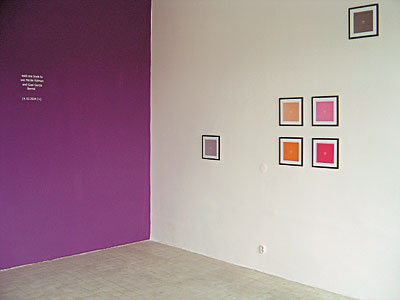














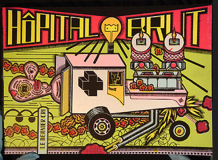




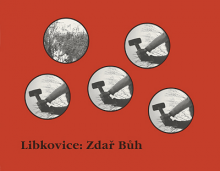
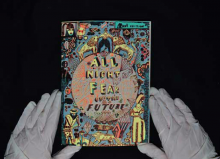
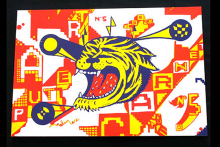
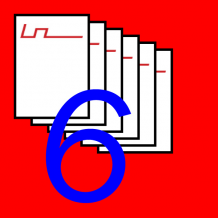


 We Are Rising National Gallery For You! Go to Kyjov by Krásná Lípa no.37.
We Are Rising National Gallery For You! Go to Kyjov by Krásná Lípa no.37.
Comments
There are currently no comments.Add new comment